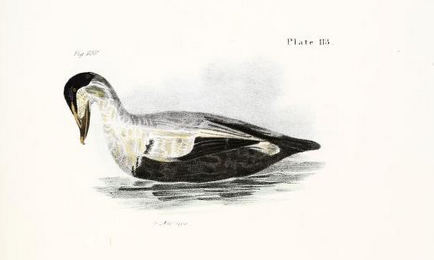Two hundred fifty-one years ago, Morten Thrane Brünnich (yes, he of thick-billed murre fame) published his Eder-Fuglens Beskrivelse, “A Descriptive Account of the Eider Duck.”

The great Danish naturalist concludes his study with an impassioned appeal for common sense in the exploitation of this species:
Do not the highest reasons prove that this bird should deserve the protection granted it by our blessed kings, most particularly by King Christian VI piae memoriae, who forbade any and all in these lands to destroy a single one of these birds, on pain of imprisonment? Are there not enough other birds of sea and shore that can and do serve as human food that it should be unnecessary to rob this bird of his life, a life so useful both to him and to us? Can a man not find more usefulness in this bird by leaving its eggs alone, or by removing them only temporarily and returning them to the nest in order to encourage the laying of more? Is it not worth the effort to teach the ignorant Greenlanders and to encourage the sensible ones to collect the ducks’ down, which is otherwise harvested only by the wind? Are we not at considerable pains to raise silkworms, in spite of the fact that they are foreign creatures unsuited to our part of the world, in an effort to establish a silk industry here in Denmark? How much more we should devote our attentions to a bird that is native to our country, a bird that asks only for its life and the life of its offspring, a bird that every year offers us reliable tribute if only we take the trouble to accept it. Surely we could create a new trade in eider down that would be far more profitable for Denmark!
They don’t taste all that good anyway.

